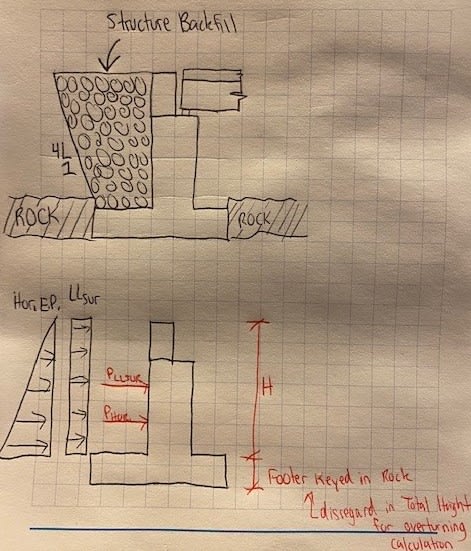CivilEng_1stopshop
Civil/Environmental

I am designing a concrete abutment where the footer shall be completely keyed into solid bedrock. My question is - can I reduce the wall height dimension used to compute the horizontal earth pressure and live load surcharge forces acting on the wall to just be from top of wall to top of footer? My firm currently calculates these loads based on the height being from top of wall to bottom of footer, regardless of soil conditions.. I have reviewed many sets of Construction Plans in the last couple of years that have been designed by others, and when I check their abutment designs by running the calcs myself, my footer width is always much larger unless the Plans that I am 'checking' have the foundation bearing in soils rather than bedrock.
This is my first thread post in this forum - I tried to attach an image to help better describe my question, I hope all can see it. The top schematic shows that the abutment footer shall be completely keyed into rock and sloped structure backfill shall be placed/compacted on top of it. The schematic below it shows the corresponding horizontal loads that I want to calculate for the situation. My desire for reducing the wall height if the footer shall not have structure backfill placed behind it is to reduce the horizontal forces, which shall in most times help with overturning and enable me to reduce the overall footer width.
- Thanks in advance -
